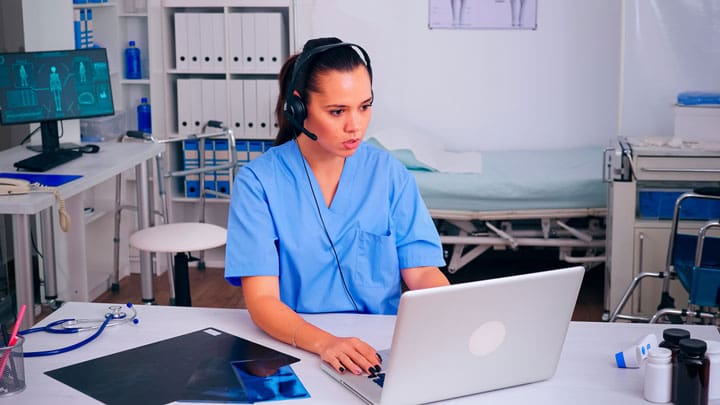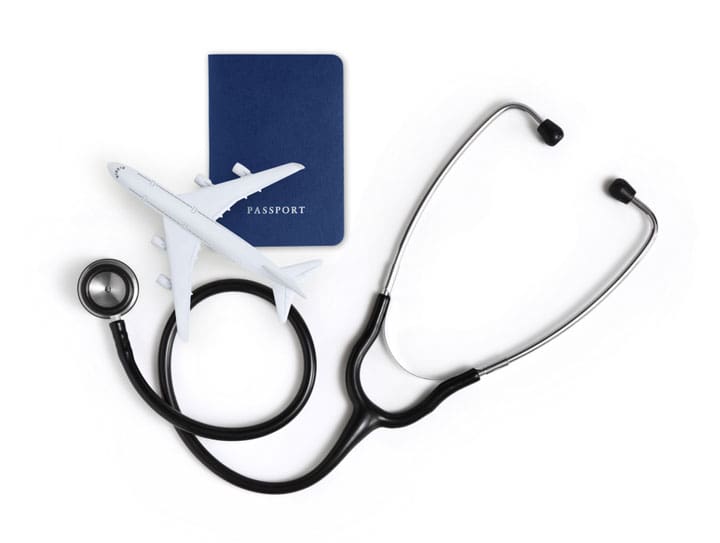Simulations give healthcare professionals and students the opportunity to practice complex skills in realistic settings. According to David Gaba, MD, director of the Center for Immersive and Simulation-Based Learning at Stanford University School of Medicine, “Simulation is a technique—not a technology—to replace or amplify real experiences with guided experiences that evoke or replicate substantial aspects of the real world in a fully interactive manner.”
Simulation has rapidly become an integral part of clinical education in the health professions, from prelicensure programs through orientation, residencies, and professional development. Advancement of simulation in health care opens new career paths in teaching with cutting-edge technology while contributing to healthcare quality and safety.
Healthcare simulation educators (HSEs) support healthcare professionals who are learning to manage clinical situations and provide care that’s safe, effective, efficient, timely, patientcentered, and equitable. This article describes the important roles HSEs can play and provides resources nurses can use to prepare for their new roles in educational simulation.
What HSEs do
HSEs may teach an individual learner or a group of learners practicing to work as a team. Simulation settings represent specific environments, such as an operating suite, a hospital unit, or an emergency response site in the community. The fidelity level (degree of realism) and simulation education model chosen for a particular situation depend on the desired learning outcomes and available resources. Simulation delivery models include those that use task trainers, mannequins, standardized patients, computerbased settings, and virtual reality. (See Models of simulation-based clinical education.)
Simulation-focused theory and research provide the scientific basis, practice guidelines, educator competencies, and quality standards for this field. The International Nursing Association for Clinical Simulation and Learning has developed comprehensive standards of practice for simulation. In 2015, the National Council of State Boards of Nursing published guidelines for the use of simulation in prelicensure nursing education; the guidelines recommend special preparation for educators whose teaching will involve simulation.
Progress in the area of simulation has inspired advancement in other areas of nursing education and practice. For example, debriefing and reflection have proven so valuable in enhancing learning during simulation that nursing leaders are promoting arenewed integration of those teaching-learning strategies across the nursing curriculum.
Roles for HSEs
If you’re interested in an expanded career role as an HSE, you have many options for getting involved. Roles, titles, and team members vary across settings. Some simulation centers are run by one educator and serve one healthcare profession, whereas larger centers may employ technical and educational specialists under the direction of a simulation director and support learners from multiple health professions.
Roles for HSEs may be direct or indirect. Direct roles and associated activities include:
• academic program educator or faculty member: teaching through simulation, designing simulations congruent with the curriculum, promoting reflection and debriefing, evaluating performance, and providing feedback.
• clinical department educator: teaching through simulation, designing simulations congruent with quality-improvement processes, promoting reflection and debriefing, evaluating performance, and providing feedback
• operations specialist: scheduling, managing equipment and technical support, and providing voice responses for mannequins and off-screen characters
• center director or coordinator: providing leadership for staff; managing budget, staffing, and facilities.
Indirect roles and corresponding activities include:
• researcher: conducting studies using simulation as a tool to investigate clinical practice questions or identify the most effective uses of simulation; designing optimal healthcare processes and equipment
• corporate sales and education: providing training and ongoing customer support related to simulation technology
• entrepreneur: providing simulation services to healthcare organizations that don’t run their own simulation services
• administrator: supporting stra tegic planning and overall management of a simulation center
• leader across roles: serving on simulation center advisory boards or on professional organizations.
Resources for clinicians interested in developing simulation-based clinical education include professional organizations, certification, conferences, continuing education courses, and certificate and academic degree programs.
A new direction for you?
The continued development of simulation as a safe and effective method for practicing clinical skills will call for additional educators with expertise in healthcare simulation. HSE roles offer meaningful and exciting career opportunities for nurses and other healthcare professionals. Perhaps the role of HSE is in your future.
Deborah Lindell is the director of the graduate entry nursing program and associate professor of nursing at Case Western Reserve University’s Frances Payne Bolton School of Nursing in Cleveland, Ohio. Kathleen Poindexter is an assistant professor and clinical nursing specialist-education concentration program coordinator at Michigan State University’s College of Nursing in East Lansing. Debra Hagler is a clinical professor and coordinator for the scholarship of teaching and learning in the College of Nursing & Health Innovation at Arizona State University in Phoenix.
Selected References
Alexander M, Durham CF, Hooper JI, et al. NCSBN simulation guidelines for prelicensure nursing programs. J Nurs Reg. 2015; 6(3):39-42.
Gaba DM. The future vision of simulation in health care. Qual Saf Health Care. 2004;13 (suppl 1):i2-i10.
Huang YM, Rice J, Spain A, Palaganas JC. Terms of reference. In: Palaganas JC, Maxworthy JC, Epps CA, Mancini ME, eds. Defining Excellence in Simulation Programs. Philadelphia: Lippincott Williams & Wilkins; 2015; xxi-xxxiv.
Institute of Medicine. Crossing the Quality Chasm: A New Health System for the 21st Century. Washington, DC: National Academy Press; 2001.
Jeffries PR. Getting in S.T.E.P. with simulations: simulations take educator preparation. Nurs Educ Perspect. 2008;29(2):70-3.
National League for Nursing Vision Series. Debriefing Across the Curriculum: A Living Document from the National League for Nursing in collaboration with the International Nursing Association for Clinical Simulation and Learning (INACSL). April 20, 2015.
Sittner BJ, Aebersold ML, Paige JB, et al. INACSL standards of best practice for simulation: past, present, and future. Nurs Educ Perspect. 2015;36(5):294-8.
Standards of best practice: Simulation. Clin Simulat Nurs. 2013;9(suppl 6). goo.gl/2jGzb1


















